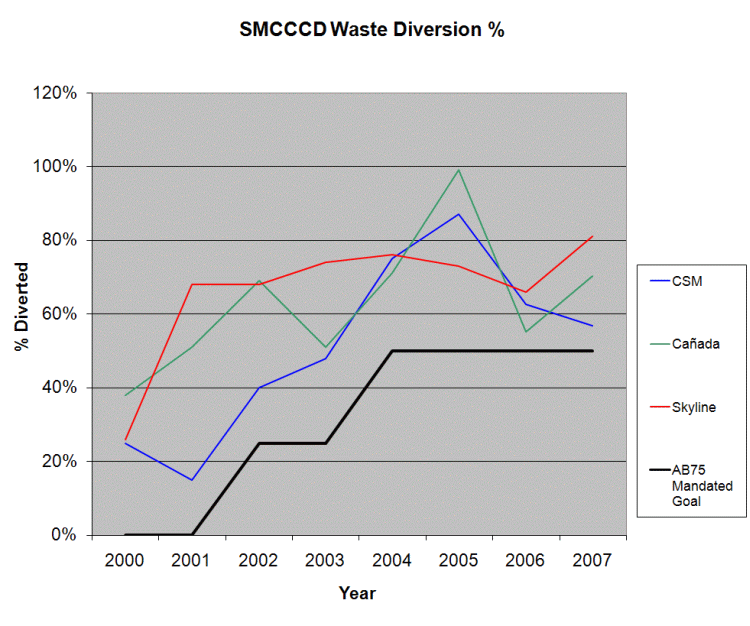Waste Management
What do we mean by Waste Management? For that matter, what do we mean by Waste? Waste consists of mixed garbage, along with recyclables such as beverage containers, paper products, toner cartridges, unwanted furniture/fixtures/equipment, used batteries, unwanted food, dirty paper towels and tissues, hazardous waste (such as asbestos-containing material such as vinyl asbestos floor tiles), burned-out light bulbs, demolished or unusable construction materials, etc.
For years, most of this waste was trucked to landfills and buried. Waste Reduction Measures lowers the amount of waste which is sent to landfills.
In January 2000, the State mandated that State Agencies such as SMCCCD develop and implement an integrated waste management plan that reduces the amount of waste that goes into landfills. This legislation (AB75) mandated that we divert a percentage of waste, rising over time, from being sent to landfills. The goal was achieved by reducing the amount of material we use, recycling or reusing what we can, composting organic waste and other efforts.
Our waste reduction measures have included but are not limited to the following:
- We’ve placed copiers that have the ability to make double-sided copies.
- We’ve implemented recycling programs by placing recycling containers around the campuses, and modified our waste collection activities to keep recyclables separate from garbage.
- We’ve developed and encouraged the use of information technology for electronic processing of business transactions and communications.
- We’ve changing the kinds of plants used in landscaping to reduce trimmings. For example, instead of planting areas of grass, we’re using more groundcovers that don’t take as much maintenance effort, and don’t generate grass clippings. We’ve converted many of our natural turf athletic fields to synthetic turf, resulting in a dramatic decrease of grass clippings. We chip our tree trimmings and place the chips as mulch – reducing the amount of organic material entering the waste stream as well as resulting in healthier landscaped areas.
- We’ve developed a donation and resale program to identify downstream users for our unwanted furniture and equipment. Our surplus efforts include our own online auction site for sale of unwanted assets with residual value, and development of a network of nonprofit agencies who need and appreciate our old items.
These efforts and much more have resulted in our exceeding State mandated waste reduction goals.
The chart below shows the percentage of our waste that is no longer sent to landfills,
benchmarked against our mandated goals. The hard work, dedication and environmental
stewardship demonstrated by the college community, ITS, General Services and the Facilities
Department have more than achieved our goals.
